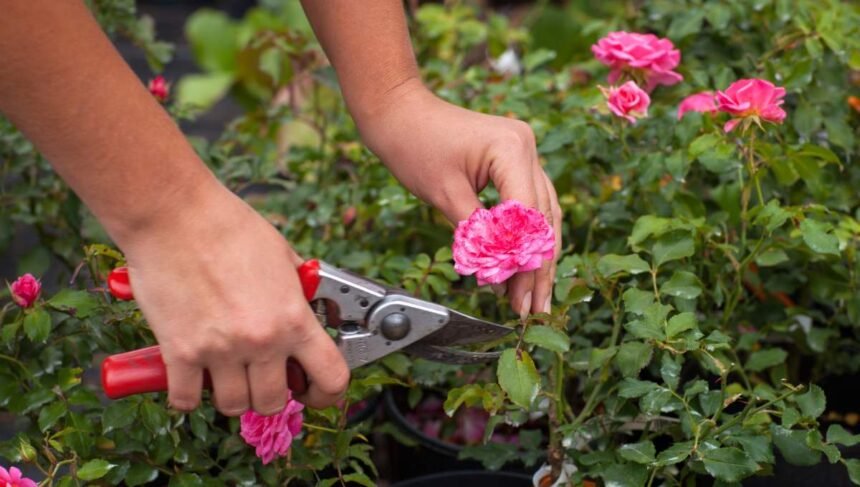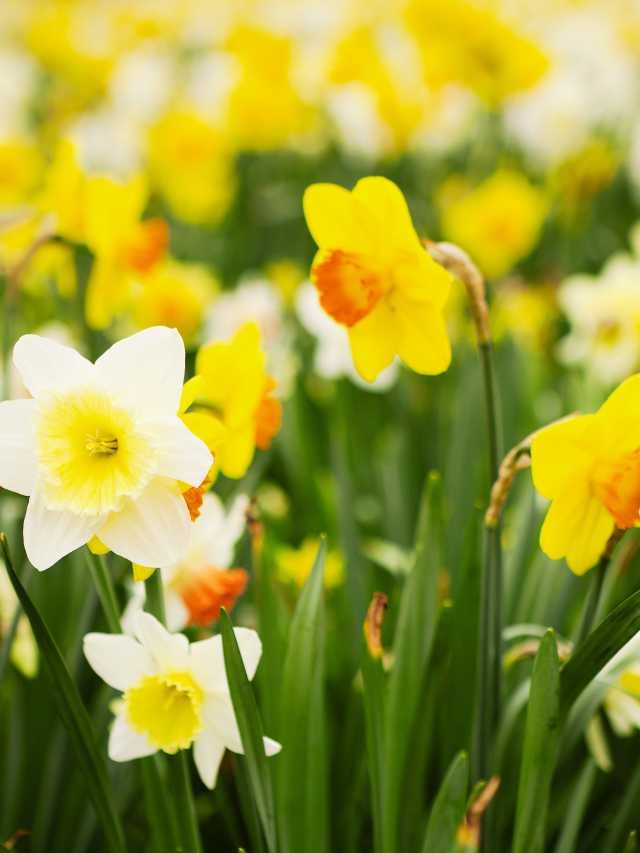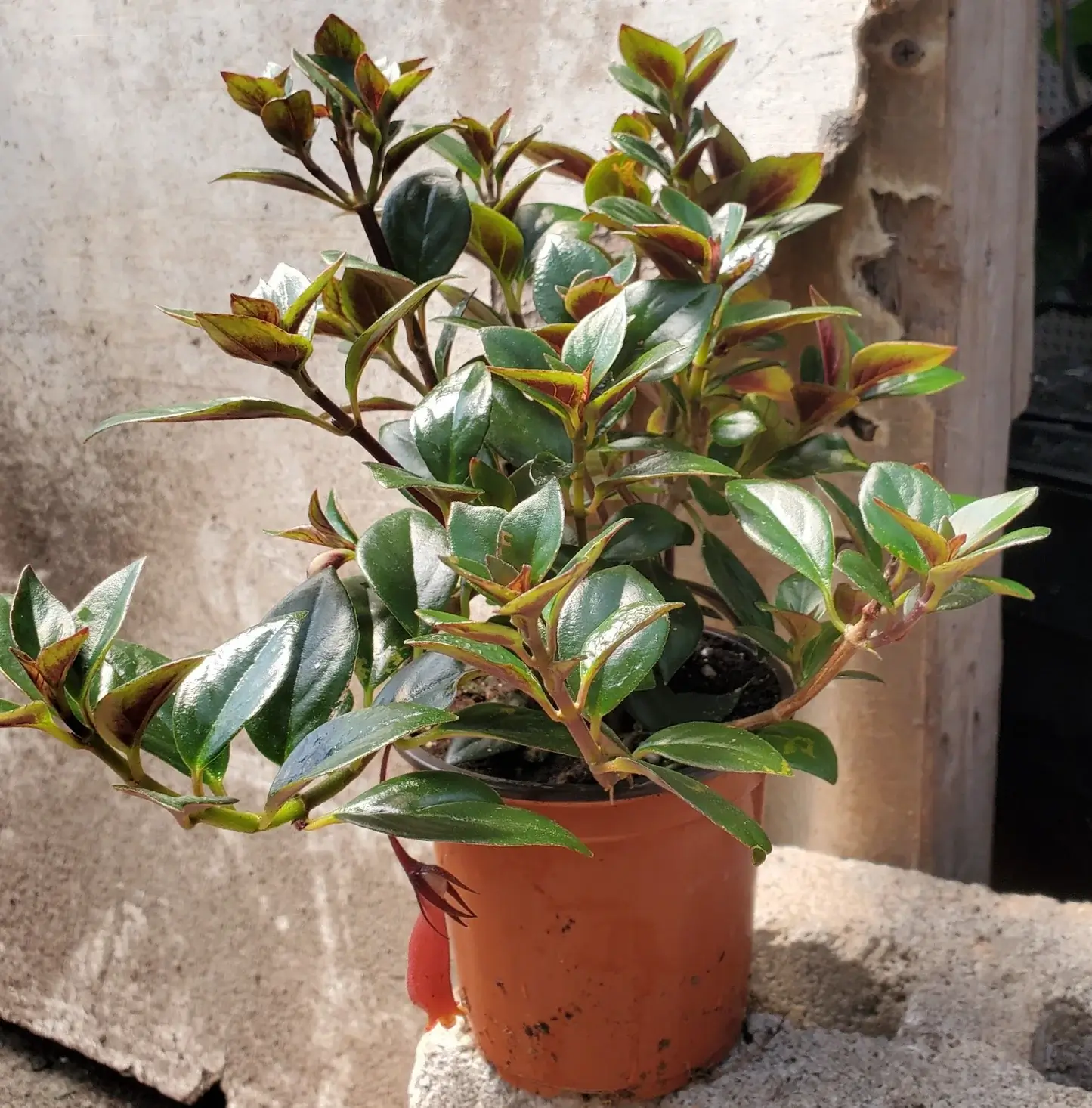Spring rose look their most beautiful in the spring, when they wake up from their winter sleep. Taking care of your roses in the spring is important whether you’ve grown roses before or this is your first time growing.
We’ll go over all the important steps and tips you need to keep your spring rose garden happy and healthy this spring in this guide.
Pruning: The Key to Healthy Growth
To get new growth, better air flow, and to keep your rose bushes looking their best, you should trim them in late February or early March.
- Timing is everything: Cut back your roses before the leaves grow, when the buds start to open. This gives the plant more energy to make its canes stronger.
- Tools of the trade: For bigger twigs, get a good set of pruning shears or loppers. To stop the spread of germs, clean your tools with rubbing alcohol or a cleaner.
- Pruning technique: Just cut off at the base any canes that are dead, broken, or sick. Get rid of any canes that are crossed or too close to each other. This will help the air flow. For floribundas and mixed teas, cut the last few canes diagonally just above the bud that faces outward. This should be done about 6 to 12 inches above the ground.
Expert Tip: Conduct a soil test to determine the specific nutrient needs of your spring rose garden. This will help you tailor your fertilization program for optimal results.
Spring Rose Watering
To keep your spring rose healthy and strong, you need to water them the right way. When they get new leaves in the spring, make sure to give them more water.
- Make sure to give the plants a lot of water. Slowly and deeply water the dirt until it is wet about 6 to 8 inches deep. If you water too little, the roots may not grow deep enough.
- If you don’t want your roses to dry out or get fungal diseases, water them in the morning or evening.
- Check to see if the dirt is dry a few inches down with your finger before you water. This means it’s probably time to water.
Expert Tip: Invest in a soaker hose or drip irrigation system to deliver water directly to the root zone, reducing water waste and minimizing the risk of fungal diseases caused by wet foliage.
Taking Care of Pests and Diseases
Roses are very vulnerable to bugs and diseases, especially when they are growing new leaves in the spring. It’s important to keep an eye on them and do what you can to keep your rose yard healthy.
- Check your spring rose bushes every so often to see if they have any signs of bugs or diseases, like leaves that don’t look right, growth that isn’t growing as it should, or bugs hanging out.
- Plant dill, fennel, or yarrow near your roses to attract ladybugs, lacewings, and parasitic wasps. This will help the good bugs.
- Before you use chemicals to get rid of pests and diseases, try using natural ways first, like neem oil, insecticidal soap, or horticultural oil.
- Just make sure to get rid of any plants that are sick or really affected so that the problem doesn’t spread.
Expert Tip: Practice crop rotation by planting your roses in a different location each year. This can help break the cycle of soil-borne diseases and pests.
Deadheading: Promoting Continuous Bloom
A simple way to keep your spring rose bushes blooming all spring and summer is to remove the spent flowers, which is also known as “deadheading.”
- It’s important to wait: When your roses start to fade or lose blooms, just cut off the dead flowers. In this way, the plant won’t waste energy on making seeds.
- Cut off the old flower just above the first set of five-petaled leaves with sharp trimming shears or shears.
- Remove any flowers that are drooping: To stop diseases from spreading, remove any flowers and petals that are drooping.
Expert Tip: When deadheading, take the opportunity to remove any damaged or diseased canes or leaves to maintain the overall health of your rose bushes.
Enhance Bloom Size and Quality through Disbudding
As plants lose their small side buds, they can grow bigger, more showy flowers. This is called disbudding. This way, the plant can put all of its energy into making smaller, better flowers.
- When the main bud is about the size of a pea and smaller buds start to show up, pinch the flower stem.
- To remove the side buds gently, just use your fingers or scissors. The center bud should stay in place.
- Don’t stress out, and know that patience is key. Cut back to just the strongest and healthiest canes, and be careful not to break off all the flowering stems. This can put too much stress on the plant.
Expert Tip: Disbudding is most effective on hybrid tea and grandiflora roses, as they naturally produce larger blooms. For floribundas and other types that produce smaller clusters of flowers, disbudding may not be necessary.
Frequently Ask Questions
Can I plant new rose bushes in the spring?
The weather is nice and the ground is moist in the spring, which is the best time to put new rose bushes. Make sure the spot you pick has good drainage and lots of sunshine so your new plants can grow well.
How can I protect my roses from late spring frosts?
If there is a chance of frost in the spring, it can hurt your roses’ new shoots and pretty flowers. Before it gets dark, cover the bushes with a frost blanket, cloth, or even an old sheet to keep them safe. At any time during the day when it’s warmer than 0 degrees, you can remove the cover.
Is it necessary to remove the mulch from my rose beds in spring?
Yes, you should get rid of the old mulch in your rose beds early in the spring. This keeps any bugs or diseases that might be hiding in the leaves out and helps the soil warm up faster.
Can I transplant existing rose bushes in the spring?
Rose bushes can be moved all the way to a new spot in the spring, but this isn’t usually the best idea. In fact, fall is the best time to do this because the plants are cooler and not growing. Moving them around in the spring could hurt their health and make it hard for them to grow and bloom during the season.
How often should I fertilize my roses in the spring?
It is best to use a balanced rose fertilizer on most types of roses when new growth starts to appear in early spring. It should be used every 6 to 8 weeks while plants are growing; just follow the advice on the package.
Can I use rainwater to water my roses?
Yes, rain water is good for your spring rose because it doesn’t have any chemicals like chlorine that can hurt them like tap water does. Put rainwater in barrels or anything else you can find to keep your plants happy during a drought.
Should I remove the suckers from the base of my spring rose bushes?
There are stems called suckers that grow from the base where the rose is grafted. You will need to get rid of them. The rose needs that energy, but those suckers take it all away and can finally take over the whole plant.
Is it necessary to stake or trellis my climbing roses in the spring?
Early spring is a great time to put up poles, trellises, or other supports for your growing roses if you haven’t already. This will help the new canes grow straight and keep them from getting tangled or broken.
Can I grow roses in containers during the spring?
Of course! This is a great way to grow roses if you don’t have a lot of garden room. Just get a big pot that drains well and fill it with good rose-specific potting mix. Also, don’t forget to give the pot at least six hours of sunshine every day.
How can I encourage repeat blooming on my roses throughout the spring and summer?
If you want your rose plants to have more flowers, you need to keep getting rid of the dead ones. That means the plant should stop making old roses and start making new buds instead. Also, don’t forget to keep the flowers growing by giving them enough water, fertilizer, and sun.

















